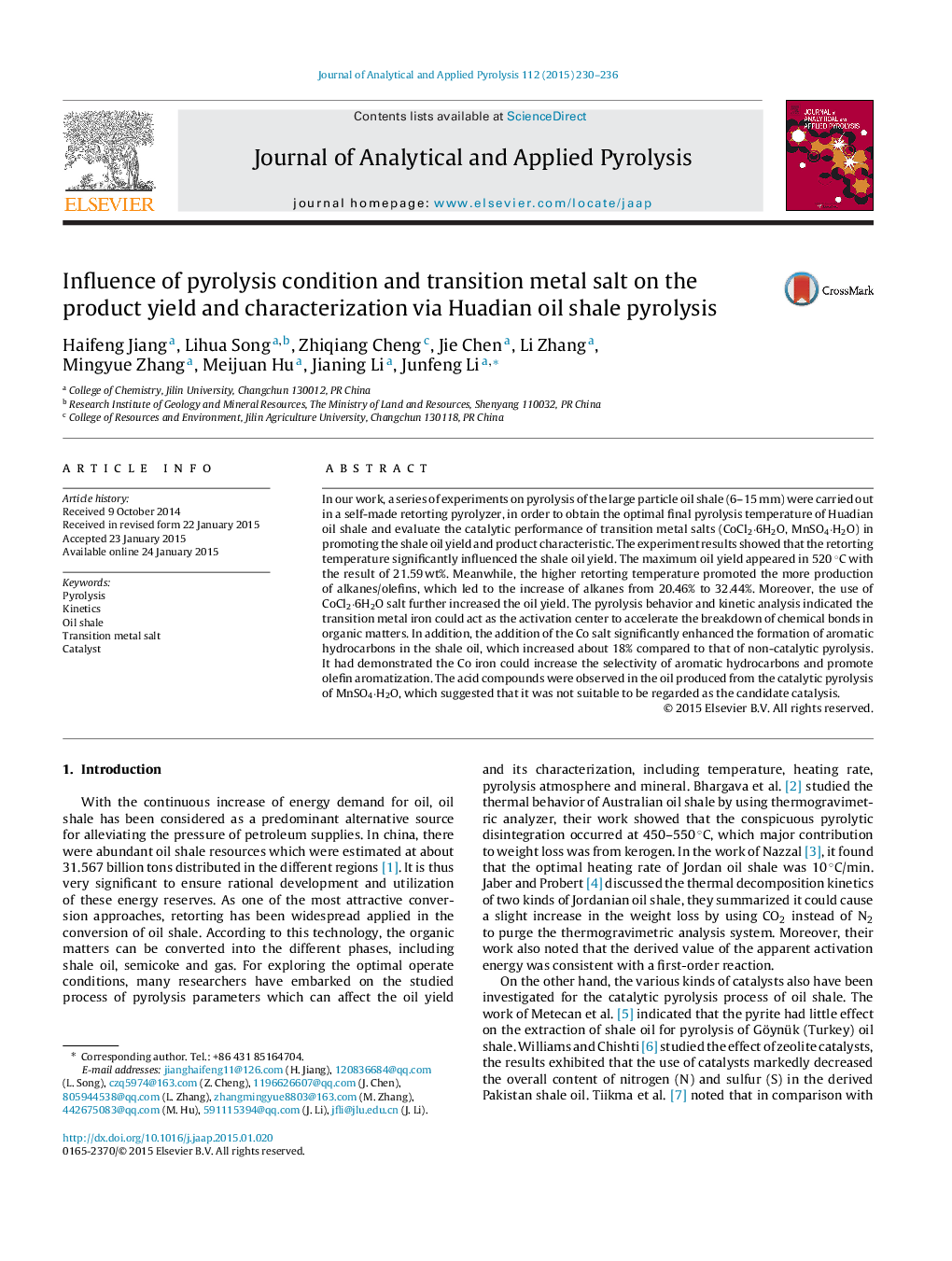| Article ID | Journal | Published Year | Pages | File Type |
|---|---|---|---|---|
| 1197237 | Journal of Analytical and Applied Pyrolysis | 2015 | 7 Pages |
•Investigated the pyrolysis behavior of large particle oil shale.•Determined the optimal pyrolysis temperature of Huadian oil shale.•Revealed the influence of transition metal salt on the activation energy.•Evaluated the catalytic performance of metal salt on oil yield and characteristics.
In our work, a series of experiments on pyrolysis of the large particle oil shale (6–15 mm) were carried out in a self-made retorting pyrolyzer, in order to obtain the optimal final pyrolysis temperature of Huadian oil shale and evaluate the catalytic performance of transition metal salts (CoCl2·6H2O, MnSO4·H2O) in promoting the shale oil yield and product characteristic. The experiment results showed that the retorting temperature significantly influenced the shale oil yield. The maximum oil yield appeared in 520 °C with the result of 21.59 wt%. Meanwhile, the higher retorting temperature promoted the more production of alkanes/olefins, which led to the increase of alkanes from 20.46% to 32.44%. Moreover, the use of CoCl2·6H2O salt further increased the oil yield. The pyrolysis behavior and kinetic analysis indicated the transition metal iron could act as the activation center to accelerate the breakdown of chemical bonds in organic matters. In addition, the addition of the Co salt significantly enhanced the formation of aromatic hydrocarbons in the shale oil, which increased about 18% compared to that of non-catalytic pyrolysis. It had demonstrated the Co iron could increase the selectivity of aromatic hydrocarbons and promote olefin aromatization. The acid compounds were observed in the oil produced from the catalytic pyrolysis of MnSO4·H2O, which suggested that it was not suitable to be regarded as the candidate catalysis.
